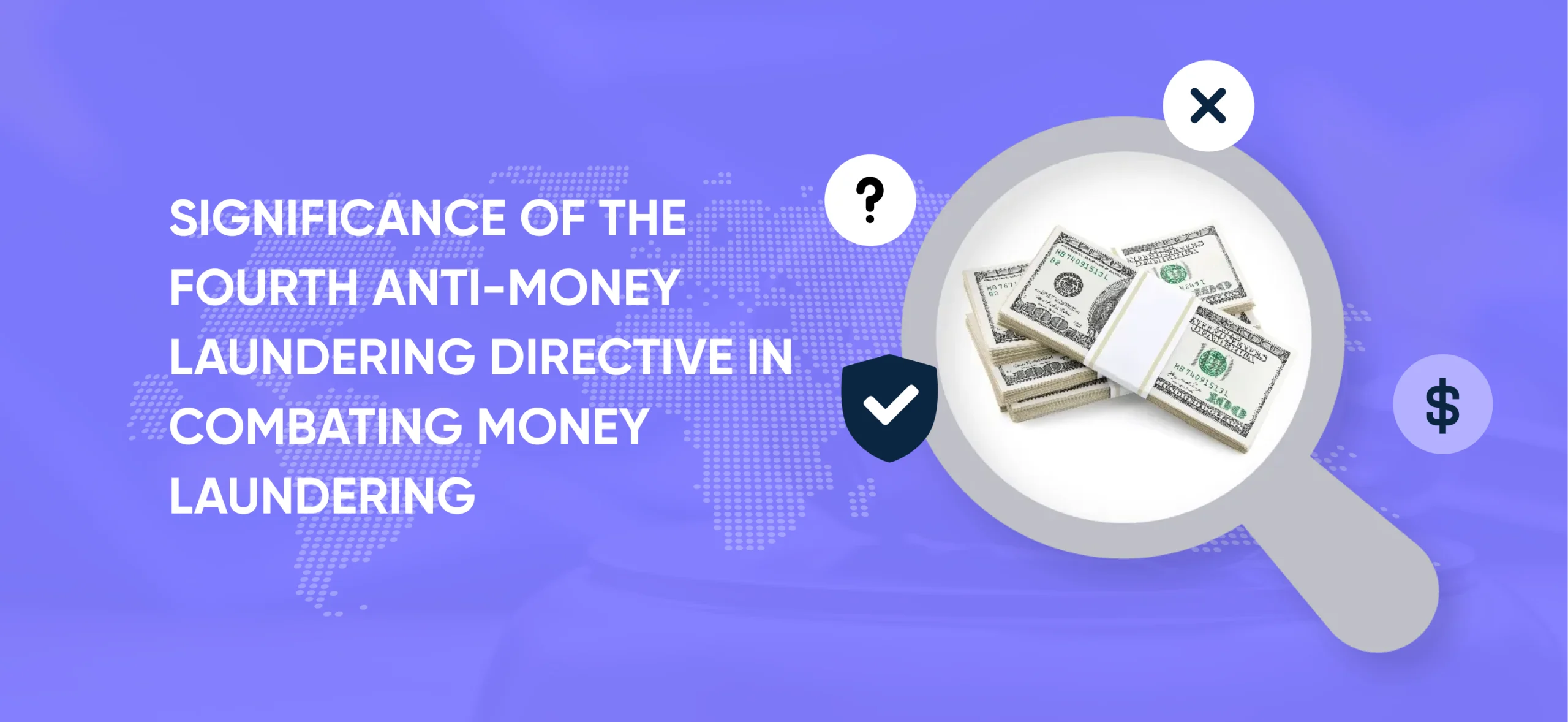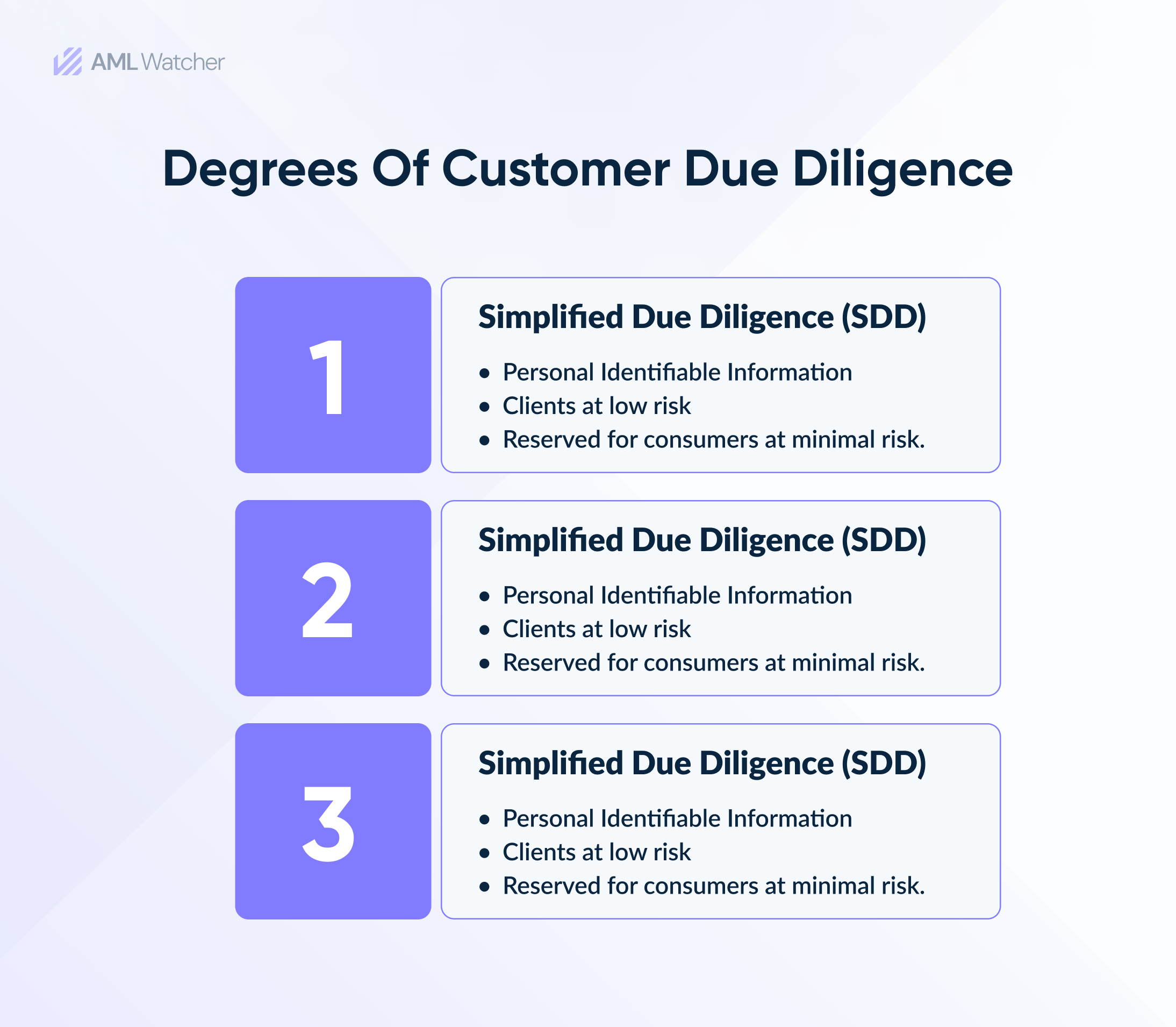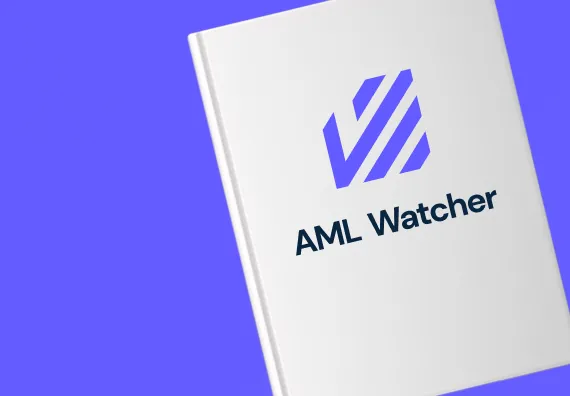
Significance of the 4th Anti Money Laundering Directive in Combating Money Laundering
Is the Fourth AMLD just another regulation, or is it the game-changer we need in the fight against financial crime? Let’s find out.
Money laundering is known as the integration of illegal money into the regular financial system by concealing its origin and source and utilizing it without becoming noticeable in the eyes of regulatory bodies.
Legislative rules are implemented to prevent money laundering and the utilization of finances to promote terrorism.
This set of guidelines is the Anti-Money Laundering AML Directive AMLD by the European Union (EU).
Every nation has its own set of rules for its system, which changes according to suggestions from the Financial Action Task Force (FATF).
These implementations of rules stop funding the criminal and conversion of illegal money into legitimate money.
Europe is imposing Aml directives on each member of the EU state by adding it into their legal system. A uniform framework implies stability in anti-money laundering.
Did you know? “The European Union introduced the Fourth Anti-money Laundering Directive on June 26, 2015, and asked all state entities to incorporate the directive into their national legislation by the system from 26 June 2017 to strengthen the global financial system.”
The fourth anti-money laundering directive replaced the third Anti-Money Laundering Directive and all previous ones and was upgraded to 4 AMLD by making suggested changes.
But why does the need arise in the first place?
How is the 4th Anti-Money Laundering Law Directive Important?
Everyone is aware of the reality that the techniques and ways of committing crimes also change with time due to the intelligence of professional criminals.
Hence, Improvements in the legislative system require more advanced and organized laws, which fill the gap in the previous laws, and shortcomings can be fulfilled for better results.
Directive (EU) 2015/849 alters Regulation (EU) No 648/2012 and removes Directives 2005/60/EC and 2006/70/EC to obstruct the implementation of the financial system for money laundering or funding the terrorists. The European Anti-money laundering law was passed on May 20, 2015.
Anti-money laundering laws are not restricted to Europe only. Other countries, like the U.S., also have strong foundations, and AML compliance with directives among the nations is also necessary for combating money laundering.
Let’s explore further and know how the dynamics are changing?
How AML Directives Have Progressed in Europe?
The European Community reported the First AML Directives in June 1991, aligning with the suggestion of FATF Recommendations, Documentation proposed by the 1988 UN Vienna Convention, and the 1990 CoE Strasbourg Convention to combat the means of money laundering.
In this AML directive, Money laundering was introduced with another word, Criminal activity, that was mainly related to drug-related crimes.
The Directive intended to monitor the financial systems, such as banks and other organizations, that deal with transactions of large amounts.
Here’s how banks can improve AML compliance in today’s world.
6 Anti-money laundering directives have been implemented while updating the existing laws to change the rules for tackling money laundering. Updated versions help to strengthen the strategies and methods.
Here’s what the violation costs to banks and real estate companies.
Core Components of Fourth Anti-Money Laundering Directive
Why is AML Compliance with the Fourth Anti Money Laundering Directive (AMLD4) necessary?
The fourth anti-money laundering directive of Europe modified the third anti-money laundering directive on May 20, 2015, to counter money laundering and funding terrorism more precisely.
- It incorporated essential modifications to anti-money laundering processes, such as an amendment to customer due diligence, a central register of beneficial owners, and a deep concentration on risk assessments.
The coordination of financial institutions with directive guidelines could be more robust by the fourth anti-money laundering, as it is almost impossible to verify customers and transfer funds following AML and the procedures of CTF.
However, with adequate planning and strategies, the financial system can easily switch to medication. Following are improvised points to combat money laundering more effectively.
-
Risk-Based Approach
The fourth anti-money laundering directive modified simplified due diligence into a risk-based approach, which calculates risk on a broader level. Compliance with the risk-based approach has been modified.
According to the third directive, SDD had a lengthy list of excluded organizations: not all organizations, such as government agencies and publicly traded corporations, must be checked.
The fourth directive doesn’t give such a list but emphasizes the evaluation of individuals at risk.
If an organization skips any entity, considering it at low risk or no risk, they have to give a proper evidence-based report to support that. Before passing the directive, the corporations had to follow specific rules; now, they can decide according to their own risk and set specific rules.
In order to do that, all organizations have to define their guidelines for risk assessment because now they are answerable to all the alterations made by their choice according to their own risk-based measurements.
-
Enhanced Due Diligence
With respect to enhanced due diligence, “White list” has been exempted, but shockingly, the black list was incorporated. In simple terms, implementing the EDD is mandatory in any scenario in which High-risk jurisdictions are involved.
People who belong to countries that are influenced by EU/UN sanctions are perceived as high-risk customers.
Degrees of customer due diligence from basic to enhanced is easily understood by the below picture.
-
PEP Guidelines
The fourth anti-money laundering directive modifies the rules and regulations regarding politically exposed persons. In contrast to AMLD3, the definition of PEPs has become wider in article 3(9). It gives transparency about PEPs and their family members and close friends, who were considered problematic entities in the previous law.
Even if the politically exposed person is no longer in his position, organizations must recheck and regroup their customers to check their customers for at least 12 months until they possess no risk anymore.
-
Beneficial Ownership
The “25% rule of beneficial ownership” seemed reasonable in the AMLD 3 report, but it was tougher to use for complicated organizations. In addition to AML/CTF measures, many technical factors were necessary to find beneficial ownership, such as conflicting opinions, inconsistent risk assessments, etc.
Moreover, if the company has a diverse and vast network of work and its shareholders are split across multiple states, then findings about beneficial owners seem unexpected. The third AML directive reported two ways to the evaluation of beneficial ownership.
- One, known as “top tier,” which is related to a person who owns at least 25% of a client’s share.
- Second known as “bottom up,” which describes the beneficial owner as a person who has the authority of at least 25% in the client’s asset even if they were not at the top down.
The second option tries to identify the “lowest” expectation beneficial owners, so it is more difficult to locate the beneficiary.
European countries made their final choice as 13 countries adopted the “top-down” strategy while 11 countries adopted the “bottom-up.
If any confusion persists in finding the real beneficial owner, i.e., whether the person is the real owner or not, then the organization shall look for other ways to verify the beneficiary.
Advanced Anti-Money Laundering Directives
The goal is to nourish Anti-money laundering legislation to create a clean, trustworthy, and strong financial system. For this purpose, regulated bodies presented the 6 AML Directive (6 AMLD) on 3 June 2021 to fight crime and fill the gaps in previous Anti-money laundering directives.
Are You Complying to AML Directives As Required?
Are you satisfied with the existing compliance operations or looking forward to a better solution?
Find out our expert guide about what you should look out for before choosing the right screening partner for your business.
To help financial institutions comply with AMLD4’s record-keeping standards, AML Watcher is an emerging central repository to deal with compliance challenges.
Through the simple, effective and impactful nature of AML screening, it most certainly helps with compliance monitoring for AMLD 4 regulations and real time updated procedures with advanced directives to come.
By analyzing client data and transaction trends to detect possible areas of risk. This simplifies compliance with AMLD 4 regulations through keen risk management procedures.
We are here to consult you
Switch to AML Watcher today and reduce your current AML cost by 50% - no questions asked.
- Find right product and pricing for your business
- Get your current solution provider audit & minimise your changeover risk
- Gain expert insights with quick response time to your queries




